Not all spiders are the fear-inducing animals that some people think they are. There are thousands of different types of spiders in the world, and some don’t even spin webs!
Tarantulas are the most famous and popular pet spiders. But, there are hundreds of species that make great beginner spiders.
Many spiders are small, don’t take up much room, and are non-venomous. There are also many that are cheap to buy and easy to care for, even for someone who has never kept an exotic pet before.
Below we have listed 12 of the most popular species that are great for beginners. Some are large and enjoy handling, while others are small and enjoy living alone. Keep reading to find the best pet spider for you…
12. Orb Weaver
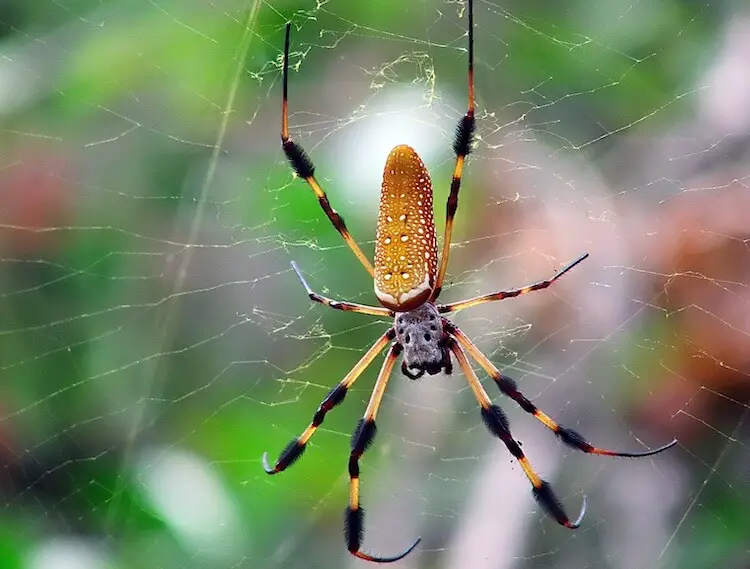
Orb Weavers are rare as they are not usually sold in pet stores or online. But, they make a great beginner spider for anyone that can find one.
This species is usually caught in gardens, fields and forests. Unlike pet lizards, many types of spiders can be caught in backyards and tend to be healthy when they live in tanks.
An Orb Weaver can be cared for by any beginner that has the space to keep them in a large 45-gallon tank.
What makes these spiders hard to keep is the amount of space they need to live.
As a species they are not very large and grow to less than one inch. However, they are naturally programmed to spin large webs that can span over a foot. They are known for spinning large, wheel-shaped webs. Without a large tank they may not spin webs at all which would lead to starvation.
Orb Weavers are usually brightly colored in appearance, ranging from golden to blue to white to orange. They often have hairy or spiny legs with a large abdomen.
| Quick Summary | |
|---|---|
| Price | Free (wild caught) |
| Size | 0.25 – 0.9 inches |
| Lifespan | 1 year |
| Tank Size | 45-gallon |
11. Black Widow
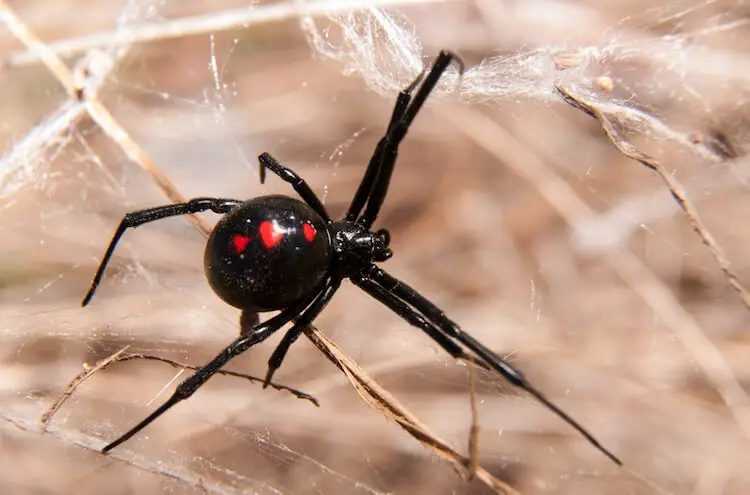
Black widows are famous for their terrifying black bodies and red hourglass markings. It is common to find one sitting in the middle of its silky web in southern and western states.
Just like the Orb Weaver (#12) they are a web-spinning spider. Unlike most species, Black widows are venomous and should never be handled. Their venom can be very dangerous to humans. If they need to be moved, they should always be done so with a small cup. It is for this reason that they are not the best pet spiders for homes with children or other pets.
Apart from the venom, Black Widows are one of the easiest beginner spiders to care for. They can be purchased for less than $20 and kept in a 5-gallon tank.
Black Widows can go for weeks without eating and are very happy to be left alone. They also do not need a very complicated or big tank setup and their cage rarely needs to be cleaned. For these reasons, they make a popular spider for someone to keep as a decorative, low-maintenance pet.
| Quick Summary | |
|---|---|
| Price | $15 – $50 |
| Size | 1.5 inches |
| Lifespan | 1 – 3 years |
| Tank Size | 5-gallon tall tank |
10. Huntsman Spider
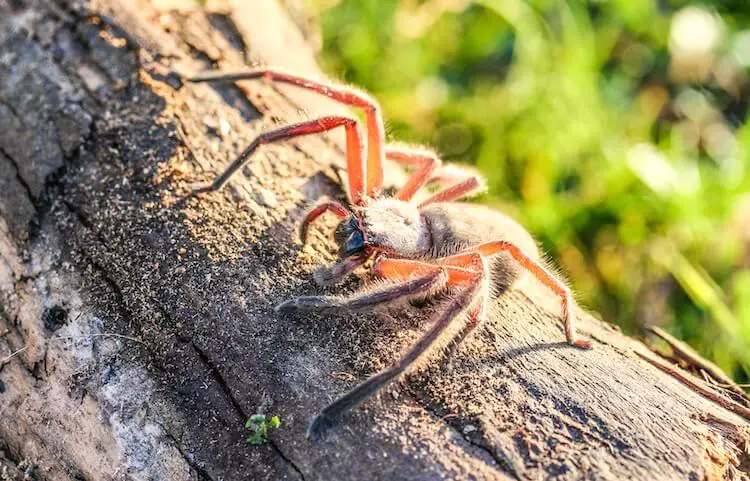
Huntsman spiders come in mini (pictured above) and giant sizes. Mini Huntsmen are much more common pet spiders as giant species are too big to be kept as a pet. In fact, the Giant Huntsman is the world’s largest spider by leg span and can measure over 12 inches.
It is recommended that if you want a Huntsman Spider, you should keep a mini one.
Huntsmen are named after their quick speed and the way they hunt. They do not build webs or sit and wait for their food like most spiders, but they actively hunt for insects and invertebrates.
What makes these spiders unique is their social behavior. Most species form bonds through a shared snare-web, but Huntsmen are social without the help of any web at all. Most live in groups of around 150. Because of this, they make a great choice for someone who wants more than one.
Unfortunately, they tend to bite when they feel threatened, so they require gentle or no handling at all.
| Quick Summary | |
|---|---|
| Price | $20 – $100 |
| Size | 3.5 inches (mini) 12 inches (giant) |
| Lifespan | 2 years |
| Tank Size | 5-gallon |
9. Costa Rican Zebra Tarantula
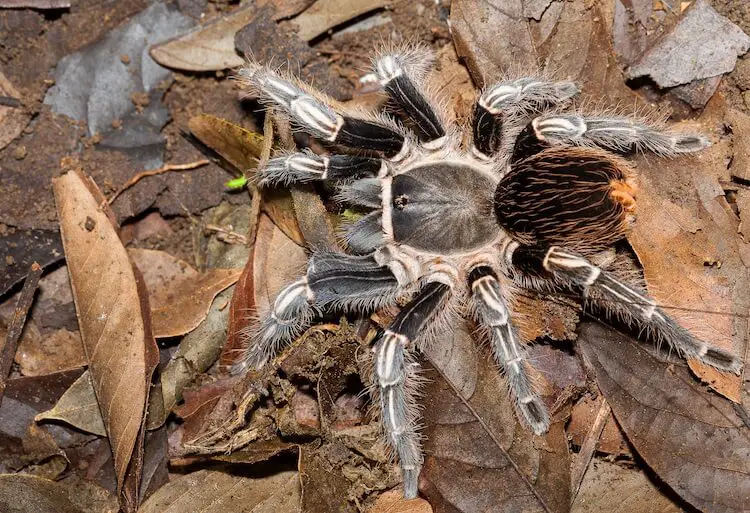
Costa Rican Zebra Tarantulas are the first of many pet tarantulas on our list.
This species is also known as the Costa Rican Stripe-Knee Tarantula because of its unique appearance. It has the same bristly body as other tarantulas, but it has two white stripes on its knees. These stripes help it to blend in with Costa Rican forest and grasslands.
Despite their appearance Costa Rican Zebra Tarantulas can be quite shy. Due to their skittish nature it is unlikely that you will ever be able to properly handle this spider.
They spend most of their time in large communities and like to burrow to escape colder temperatures.
Costa Rican Zebra Tarantulas are not difficult for beginners to care for, though they do require more maintenance than other tarantulas. Their tank must be kept at 70℉ to 85℉. It also requires misting every other day to keep humidity at 70%.
| Quick Summary | |
|---|---|
| Price | $20 – $75 |
| Size | 4 – 5 inches |
| Lifespan | 5 – 20 years |
| Tank Size | 10-gallon |
8. Fishing Spider
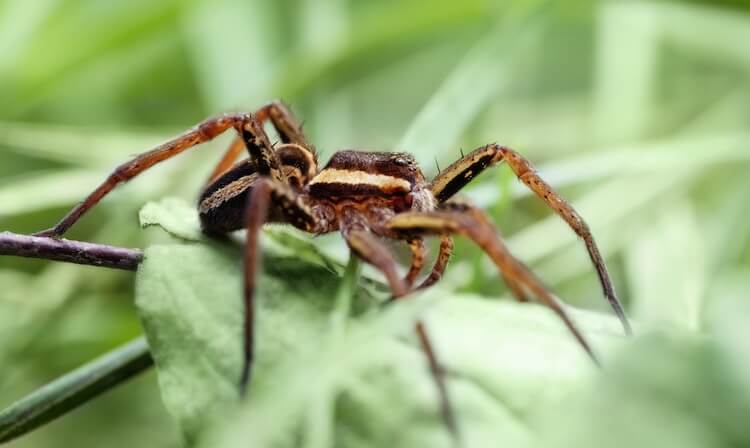
Unlike many pet spiders on our list, Fishing Spiders are quite unique. They can dive and swim under the water, as well as glide on the surface. They live near bodies of fresh water and eat insects, small fish, tadpoles, toads, and even baby salamanders.
Fishing Spiders have a scary appearance and are one of the largest types of spiders you may encounter in the United States. They have a leg span of up to four inches.
Scary appearance aside, these unique spiders are easy to care for and live happily in a tank.
They should live in a 10-gallon long tank that has plenty of live plants and a small pool of water in their tank.
Overall, they are best suited to those who want an easy-care pet but also someone who is patient and does not want to handle them. They are quick to defend themselves, so they must be handled with caution.
| Quick Summary | |
|---|---|
| Price | $20 – $50 |
| Size | 3 – 4 inches |
| Lifespan | 1 – 2 years |
| Tank Size | 10-gallon |
7. Green Lynx
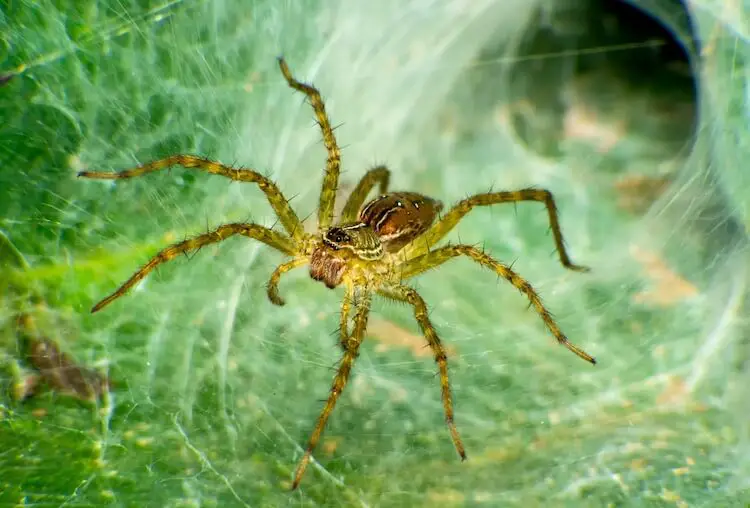
The Green Lynx is not a popular pet spider, but it is hardy and lives very well in a tank.
In North America the Green Lynx is usually found on leafy green plants which contributes to their green color. Females have been observed to gradually change color over the course of a couple of weeks if they are placed on a different colored background.
Unlike most spiders, the Green Lynx does not spin webs. They wait and ambush their prey. This makes them a vicious predator of insects. Because of their aggression towards insects gardeners use them as a natural pest control.
Whether you have these spiders in your garden or in a tank, they are easy for beginners to care for.
The Green Lynx is a very small spider, does not need a big tank, and eats freely. They will pounce on nearly any insect that you feed to them and do not require any special heat or humidity. The only downside to this pet spider is that they only live for one year.
| Quick Summary | |
|---|---|
| Price | $15 – $50 |
| Size | 0.5 – 1 inch |
| Lifespan | 1 – 2 years |
| Tank Size | 5-gallon |
6. Curlyhair Tarantula
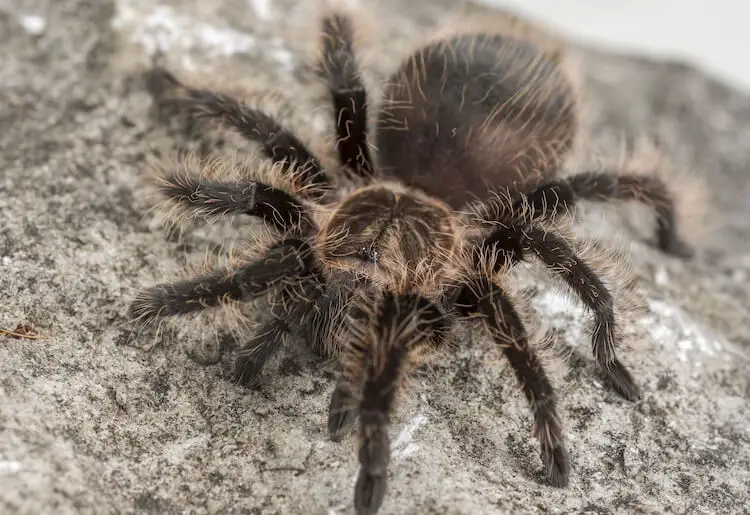
The Curlyhair Tarantula is one of the best pet spiders. It is widely bred in captivity and is of the most popular species in pet stores. Like the Zebra Tarantula (#9) they are also found in Costa Rica.
Curlyhair Tarantulas are well-deserving of their name.
They have long bristly hairs that curl on the ends, giving them a wooly appearance. They tend to be dark brown to black in color, but their bristles can sometimes look bronze.
For most of the time they like to sit motionless in their tank, taking in and watching their surroundings.
They are used to a quiet environment and may be spooked if a hand reaches for them. As they may bite to protect themselves, they make a great choice for someone who may not be so keen on handling.
Curlyhair Tarantulas are an excellent choice, even for the most inexperienced beginner. They are very healthy, easy to feed and do not need a lot of space.
| Quick Summary | |
|---|---|
| Price | $25 – $50 |
| Size | 5.5 inches |
| Lifespan | 4 – 10 years |
| Tank Size | 10-gallon |
5. Crab Spider
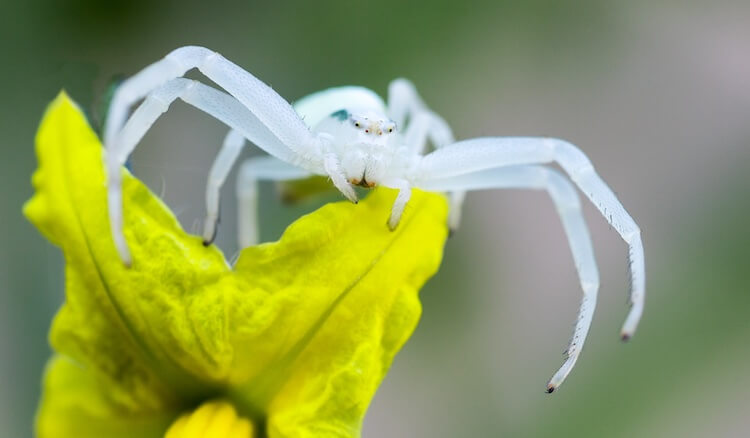
Crab Spiders are a very large family of spiders known as the Thomisidae.
There are thousands of species of Crab spiders. They are very common and can be found anywhere in the world, except for Greenland and Antarctica. You can even likely catch one in your backyard!
These spiders are very easy to care for, especially for beginners, but they will need a tank that closely resembles their natural environment. This will mean planting lots of live plants in their enclosure.
Crab Spiders are named after their close resemblance to crabs. They hold their front legs the same way as crabs do and share the same ability to scuttle sideways. While they can be any color, white species look just like crabs (pictured above). Their color largely depends on the species and the hunting terrain they live in
Similar to the Green Lynx (#7) they do not spin webs. Instead, these crabs camouflage themselves and wait for their prey to walk by.
| Quick Summary | |
|---|---|
| Price | Free (wild caught) |
| Size | 0.15 – 0.3 inches |
| Lifespan | 1 – 2 years |
| Tank Size | 5-gallon |
4. Pink-Toed Tarantula
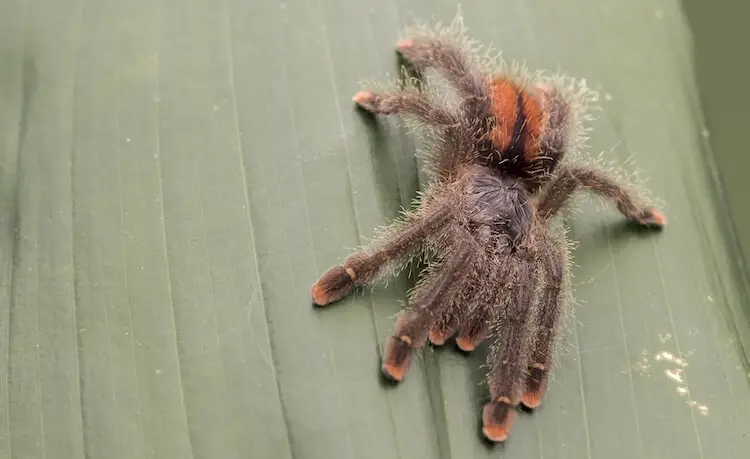
The Pink-Toed Tarantula is a very friendly species that is great for first time spider keepers. They are very docile when handled gently and infrequently.
This pet tarantulas is a tree-dwelling spider found throughout South America.
Pink toes are famous for their orange-pink-tipped “feet” that give them their signature name. The rest of their body is typically tarantula with furry dark brown hair.
They are different from other types of tarantulas because they get along with other Pink-Toed species. It is possible to cohabitate them if you have a tank big enough.
As they are a tree-dwelling species their tank should be taller than it is long. It should be 10-gallons in size and have plenty of climbing spaces (double the size for keeping two tarantulas). They are also used to more humid, tropical climates, so it is important to keep their enclosure humid, ideally, it should be around 75%.
The rest of their care and husbandry is similar to many pet tarantulas.
| Quick Summary | |
|---|---|
| Price | $5 – $40 |
| Size | 3.5 – 5 inches |
| Lifespan | 3 – 10 years |
| Tank Size | 10-gallon tall tank |
3. Chilean Rose Spider
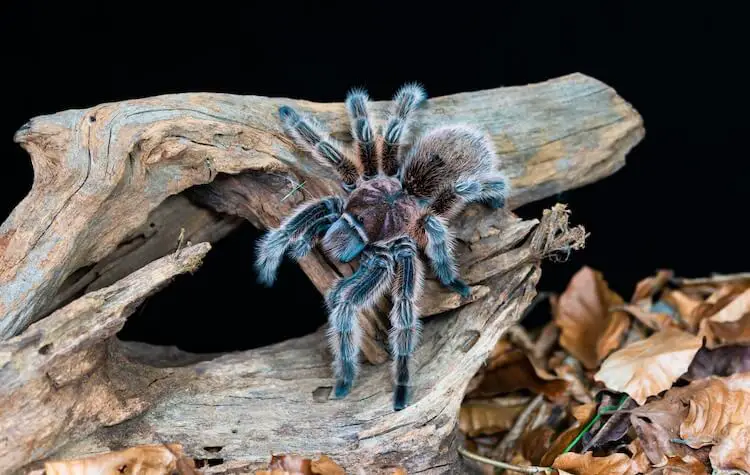
The Chilean Rose is another species of tarantula that can make a great pet.
This spider has all the aspects of what makes the best pet spider. They are docile, easy to care for, slow-growing, live for a long time and are easy to find in pet stores.
Chilean Roses tend to be docile pets, but they can bite if they feel threatened. They do not like frequent handling, so it is best to leave them alone when possible. Luckily, they are an entertaining species and like to rearrange their cage furniture, burrow, and tunnel.
One interesting thing about the Chilean Rose species is that they can fast for weeks before molting.
Overall they are like many tarantulas and make a great choice for any level. This species is more popular than most because of their appearance and availability.
| Quick Summary | |
|---|---|
| Price | $25 – $100 |
| Size | 3.5 – 5 inches |
| Lifespan | 5 – 20 years |
| Tank Size | 10-gallon tall tank |
2. Mexican Red-Knee Tarantula
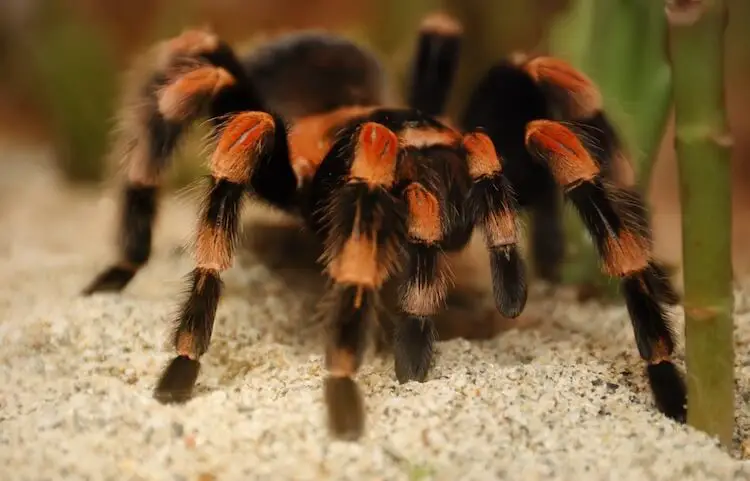
The Mexican Red-Knee tarantula is mostly found in the region from North Mexico to Panama.
Mexican Red-Knee tarantulas are preferred over other pet tarantulas due to their unique appearance. While most of their body is black, they have candy corn-like leg segments that give them a bright and colorful appearance.
This tarantula is the most popular tarantula in the pet trade and is widely bred.
Their long lifespan, hardiness and ease of care make them great beginner spiders.
Like all tarantulas, the Mexican Red-Knee can bite and inject venom. However, it tends to be less stressed during handling than other spiders and does not easily feel threatened. They rarely bite and will tolerate sitting on your palm.
| Quick Summary | |
|---|---|
| Price | $50 – $100 |
| Size | 6 inches |
| Lifespan | 5 – 30 years |
| Tank Size | 20-gallon |
1. Jumping Spider
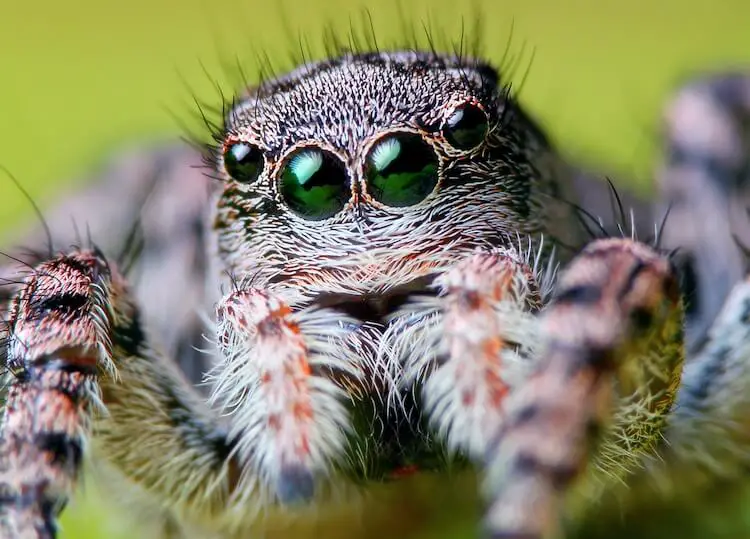
Jumping spiders are the best spider for any beginner who wants an entertaining pet.
They have a cute appearance and most importantly a friendly nature towards humans. They are very unlikely to bite you, unless you attempt to pick them up directly. If you let them crawl into your hand they will not bite.
There are thousands of different types of jumping spiders and they are found all over America. It is easier to find them in tropical areas, so you may need to buy one if you live in a cold state.
Jumping spiders are named after their ability to jump! This spider does not hunt by spinning webs. Instead it waits for prey and jumps on it.
They are small, intelligent and have different personalities. Despite being small, they need space to run and jump around. With a 5-gallon tank a jumping spider is very easy to take care of.
| Quick Summary | |
|---|---|
| Price | $15 – $25 |
| Size | 0.15 – 0.75 inches |
| Lifespan | 1 year |
| Tank Size | 5-gallon |
Picking The Best Spider
Some types of spiders are better suited to certain owners than others. Here are three things to consider to make sure you get the best pet spider:
Do you want to handle them?
Many spiders do not like to be handled. Tarantulas have barbs that can cause skin irritation, and the venom of Black Widows can be dangerous to humans. The Mexican Red-Knee (#2) and Jumping Spider (#1) are among the friendliest species that can be safely handled.
Do you want a small pet?
Jumping (#1), Crab (#5), Green Lynx (#7) and Orb Weavers (#12) are all small spiders. But, many bigger species are easier to care for. Pet tarantulas are among the easiest spiders to care for, but they tend to be six inches in length.
Do you want to catch one?
Tarantulas are usually only available in pet stores. Jumping (#1), Green Lynx (#7), Fishing (#8) and Huntsman Spiders (#10) can be purchased, but also wild caught. Crab (#5) and Orb Weavers (#12) must be wild caught.
Spiders can make great pets for any beginner. They tend to be easy to care for and are interesting to watch. Do you have a favorite? Let us know in the comments below.

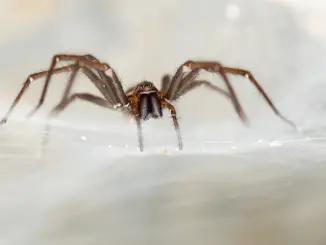
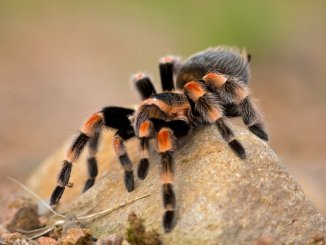
Very interesting read. The jumping spider sure sounds interesting.
A common and very easy to care for spider is the cellar spider. I have one, and while she usually hangs in her spot up high, when she gets hungry, no feeder fly is safe. It has been fascinating to watch how she catches them. They don’t get caught in her web. She goes and gets them.
I agree! I love their mating rituals. Although so delicate looking they are bad-ass going after more substantial spiders and invertebrates. They’re easy to feed and they will frequently crawl on your hand. I love how the female watches over her babies for awhile after they’re born. I’ve never kept a baby in a tank but I can imagine them getting very comfortable with a gentle handler. They’re fascinating helpful spiders.
i have been wanting a jumping spider for some time
Some genuinely fantastic content on this internet site , appreciate it for contribution.
Glad this was helpful! Feel free to tell us about other animals you want to read about!